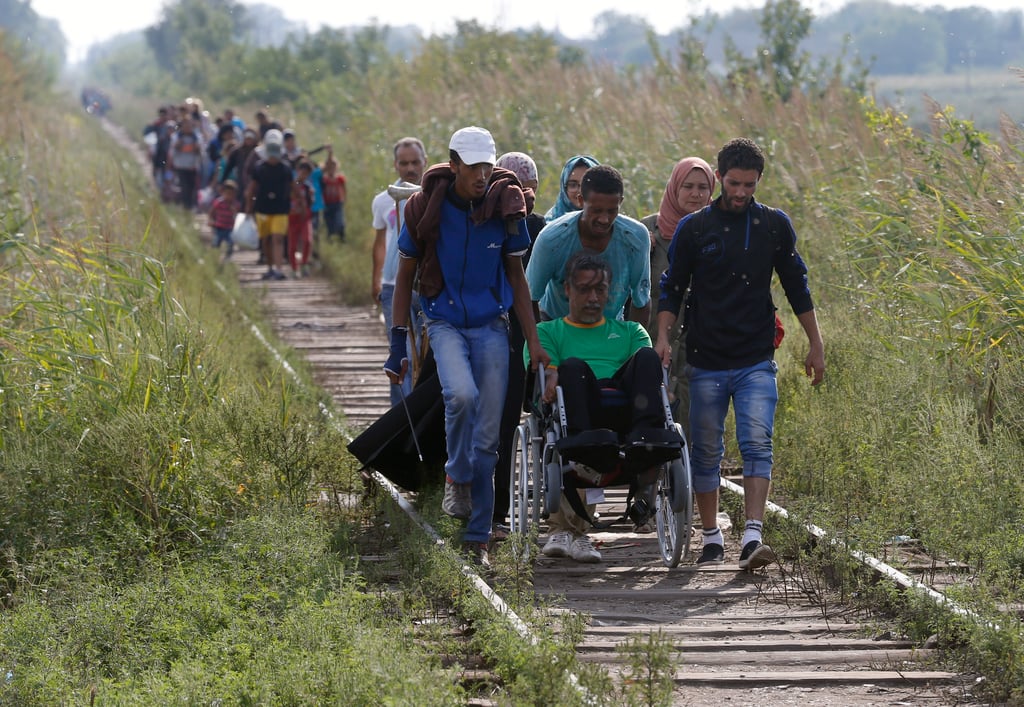This year is soon coming to a close, and it’s time to reflect and take stock. Some really strong memories will remain even after the new years’ bells have stopped ringing. It’s about people leaving their homes to seek safety and protection elsewhere.
To be forced to flee is a severe trauma for anyone, especially if you have suffered losses in your family or had your home ruined, but if you also have a disability, the journey will present even bigger challenges.
Give these people a thought and keep reading this blog post about refugees with disabilities.

In many countries, access to single-use catheters is widely available, but in large parts of the world the possibility to perform Clean Intermittent Catheterization (CIC) is extremely limited. Many young people with spinal cord injuries in poor countries die prematurely due to kidney failure.
In many places people with disabilities are isolated from community life, and risk being left behind when those around them flee. And for those who manage to flee, even the basic needs will be hard to meet. The lack of access to latrines and bathing areas also increases the likelihood of physical and sexual abuse of vulnerable people.
Today, approximately 6.7 million people with disabilities
around the world are forcibly displaced,
according to the Women’s Refugee Commission (WRC).
Accessability
In the Jordan desert camps, the summer temperatures regularly reach 40°C, and getting access to sufficient food, water and any other necessities is a daily struggle for everyone, but particularly for those with special needs. Keeping clean or going to the toilet is challenging. Some can’t stand unaided under a shower, use an Arabic-style (squat) toilet or walk miles to the distribution point for food or a mattress.
OXFAM is one of the global NGO’s working in this area and have published reports about the situation on their website:
"In many cases, even though there is an accessible toilet in the wash block, it cannot be accessed from where they live because the ground terrain is too rough and rocky", says Jeffery Silverman, OXFAM’s public health lead in Zaatari camp.
Many people are hidden in shelters, missed in assessments and not consulted in the design of programs or activities.
"It is challenging for many people with a disability to get the services they need. The agencies working in the camp are overstretched, especially with outreach staff and this creates a long waiting list for populations to be assessed", says Jeffery.
Healthcare
One of the problems is that the needs of people with disabilities are often sidelined as “non-emergency” issues.
"In cases where there is an influx of refugees, government priority is to save people from life threatening conditions. Normally government says that disability is not life threatening, so focus is on treating malaria and contagious diseases which can turn into epidemics."
This quote is from an anonymous aid worker in a Malawian refugee camp, referred to in the research report “Unmet needs and diminished opportunities: disability, displacement and humanitarian healthcare”, presented by UNHCR.
Technical aids
For many disabled people, unmet needs, especially for technical aids like wheelchairs, hinder their access to mainstream health services and other social services in the camp, which affects both their health and their overall quality of life.
"If a person has lost a wheelchair, they’re not going to be able to gain access to food distribution. So if we can replace their wheelchair, we can give them the independence that they need in order to be able to access other health services in the camp."
Life is tremendously difficult for those with Spinal Cord Injuries in poorer countries, but there are glimmers of hope as well. Watch “Hassan the movie” about 34 year old Hassan living in southern Lebanon. A group of friends from Norway provide him with regular shipments of catheters, an aid that has changed his life and probably also saved it.




